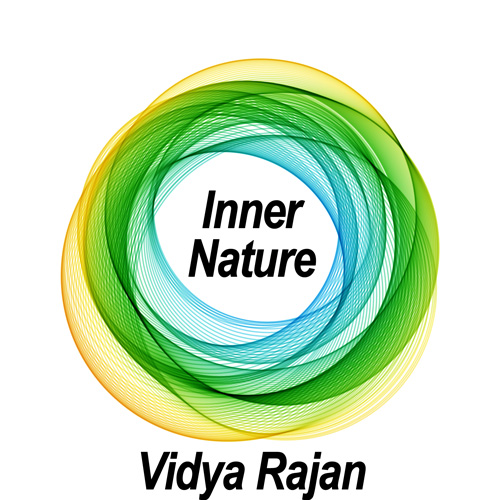By Vidya Rajan. Columnist, The Times
 Merde. In other words, s**t, p**p, d**g, number 2, BMs, excreta, droppings, stools, feces. This is not a really pleasant subject of conversation, or even a polite one (unless you lived back in the eighteenth century when everyone was apparently fascinated by it as an indicator of health). But it’s an important part of life. If you’ve ever been constipated or had diarrhea, you will appreciate the importance of regular “movement”. But beyond the icky, feces can yield a lot of information when probed carefully.
Merde. In other words, s**t, p**p, d**g, number 2, BMs, excreta, droppings, stools, feces. This is not a really pleasant subject of conversation, or even a polite one (unless you lived back in the eighteenth century when everyone was apparently fascinated by it as an indicator of health). But it’s an important part of life. If you’ve ever been constipated or had diarrhea, you will appreciate the importance of regular “movement”. But beyond the icky, feces can yield a lot of information when probed carefully.
First, not all animals make feces as we define it. “What?!”, I hear you exclaim. Well, I concede that this is a slightly misleading claim, because the animals that do not produce feces are those that have a shared mouth-anus. Ick factor aside, these animals also have the disadvantage of adding new food to the digestion chamber to mix in with the old stuff. Some of the stuff that is – shall we say regurgitated? – contains undigested material which still contains nutrients. The animals that have this one-aperture digestive system are in the jellyfish and flatworm families. This sort of two-way (in-out the same hole) system is considered pretty primitive due to its inefficiency.
More efficient digestive systems evolved in roundworms with a hole at each end of the digestive system. Thus “food” goes in one end and “waste” comes out the other end. The quality of “poop” varies, but is mostly undigested or undigestible material. In roundworm parasites of the gut like Ascaris, the worm’s excreta gets mixed in with the host’s own digestate. In roundworms like the guinea worm, which works its way to the leg muscle and causes intense burning as it tries to leave your body, poop is shed into the water in which you bathe as you try to soothe the burn. So are eggs, which will infect anyone who drinks the water. So don’t drink water without boiling it first in places where guinea worms are endemic. A targeted eradication program led to only 13 infectious cases in 2022, meaning it could be the second nasty, after smallpox, to actually be eradicated[1]. Hurrah for public health programs! (Polio’s eradication was hoped for, but for various reasons including vaccine hesitancy and the lack of vaccine delivery due to the Covid-19 pandemic [2],[3], polio is re-emerging.)
Many animals also use their feces as a way to get rid of nitrogen from their bodies. Nitrogen is a critical element – it builds proteins and nucleic acids, but also some carbohydrates like chitin from which arthropod exoskeletons are made and the some of the sugars which identify tissues in our bodies and sphingolipids which are important components of nerve cell membranes. Nitrogen is actually a fairly toxic and has to be converted to ammonia or urea (soluble) and uric acid (insoluble). Terrestrial arthropods, birds and reptiles produce insoluble uric acid, rather than ammonia or urea, to conserve water. For them, it is fairly easy to mix with their poop and excrete a single solid substance through a joint fecal/urinary opening called the cloaca. This is why bird poop (or reptile poop if you happen to have a pet python or alligator, or live in Florida with an abundance of both) has both brown and white colored components. For beekeepers, streaks of yellow or brown across the hive front indicates infection with parasites of the Nosema genus[4]. Nosema is microsporidian (fungal) parasite which burrows into the epithelial lining of the gut. Infected bees have compromised digestive systems, are unable to walk, and shed parasite spores in their feces. This becomes a bigger problem when bees are confined to the hive due to weather. Bees in areas where the giant Asian hornet live use feces in an unusual way. They collect cow dung and spread it on the hive entrance[5]. Apparently, the smell either masks the beehive or repels the hornets; either way, the bees are spared the hornets’ predatory attentions.
Mammal feces is different from those of birds and reptiles, because nitrogen is removed from the body as urine, leaving solid wastes that arise from the digestate. The color is typically some shade of brown (except the occasional startling red if you overindulge in beets or have a huge problem with fresh blood being shed in the feces; in the latter case, see your doctor) and smells “fecal”. The color is due to bile components made from destroyed red blood cells by the liver and released by the gall bladder, which is mixed in with fats to emulsify them for better digestion. The smell is attributed to the microbiota which reside in the digestive system and many billions of which are shed in feces, although there some conditions and medications that can contribute to the smell. The feces may also contain pathogenic microbes such as bacteria, protozoa and helminths (worms) that live in the digestive system. I remember a friend who worked in an abattoir in the 1980’s in England describing the tapeworms which would emerge from small intestines which were squeezed out between rollers for future use as sausage casings. It put me off sausages for a long time, although my friend still ate them with gusto.
The main “bulk” of feces is indigestible fiber, typically cellulose from plant matter. Even herbivores, which have cellulose-digesting symbionts in their guts cannot digest all of it. And even among herbivores, symbionts in foregut-fermenting animals (polygastric animals such as ruminants and camels) are largely in the chambers anterior to the stomach, whereas in hindgut-fermenting animals (such as monogastric horses and rabbits) they are in the post-stomach cecum. Obviously, ruminants absorb more nutrients than monogastric animals do. Rabbits get around this constraint by passing their first-pass feces through their digestive system a second time. Yes, rabbits eat their poop. If you have a rabbit, do not stop it from doing this – it is important to its health.
Studying feces is a curiously informative. Obviously runny or rock-hard feces indicates problems. Runny feces can be due the presence of laxatives which speed up the digestive system, to diseases such as irritable bowel disease, to infections such as cholera, or due to hormonal imbalances. There is a difference between the two pathological types of loose stools, diarrhea and dysentery. Diarrhea is when the passage contains a lot of water and waste such as in the typical rice-water stools of cholera. Dysentery is much more serious and may include the lining of the intestines with mucus and blood, and can be accompanied by excruciating pain. Hard feces occur when the wastes spend too much time in the large intestine where water resorption occurs. This is often due to low fiber in the diet.
The shapes of poop varies: pellets, tubes, splats, cubes. The shape of poop comes from the frequency and speed of colon contractions. For example, deer and rabbits produce small pellets due to frequent contractions of the colon. Cows and elephants, not so much; plus they don’t hunker down, so splat! Only one animal makes cuboid poop, and that is the common wombat of Australia. The mystery of this shape was solved when scientists recently described two rigid bands and two soft bands in the wombat’s 33-foot-long intestines[6]. (Also see https://youtu.be/fET3XCijoOI). The shape is so distinctive that wombats use them as signals around their territory. The more cuboid the poop, the better the wombat’s vigor. This fun with shapes extends to humans. The Bristol Stool Chart is a serious undertaking to diagnose health from stool shape. Healthline has made it a little more fun, below.

Reproduced from Healthline.com (Reference ) under Fair Use.
Many terms in the English language are associated with this daily ritual of gut cleansing. The word “stool” is a euphemism and derives from stool with a hole under which the chamber pot which collected the feces was placed. Toilets are called “johns” in homage to John Harington, godson of Queen Elizabeth I, who invented the flushing toilet. The word “head” for the toilet, typically used in the military is apparently because of the location of the toilet at the front of a boat where the rear of the toilet-goer faced the direction in which the boat was heading. This apparently moved the waste away from the boat (as shown in the figure I looked up because I was not convinced). This figure shows how it supposedly works. I am still skeptical.

Figure reproduced from BrightHub Engineering (Reference [8]) under fair use.
There is also a “poop deck” aft, which is the Captain’s domain. Could mariners have been taking the piss*?
*”Taking the piss” is British slang for making a joke at someone’s expense[9]. No offense intended.
References:
[1]. Wikipedia Contributors (2020). Dracunculiasis. [online] Wikipedia. Available at: https://en.wikipedia.org/wiki/Dracunculiasis
[2]. Wu, K.J. (2022). Polio Is Exploiting a Very Human Weakness. [online] The Atlantic. Available at: https://www.theatlantic.com/health/archive/2022/09/polio-eradication-vaccine-loophole/671451/
[3]. World Health Organisation (2022). COVID-19 pandemic fuels largest continued backslide in vaccinations in three decades. [online] www.who.int. Available at: https://www.who.int/news/item/15-07-2022-covid-19-pandemic-fuels-largest-continued-backslide-in-vaccinations-in-three-decades
[4]. www.ars.usda.gov. (n.d.). Nosema Disease : USDA ARS. [online] Available at: https://www.ars.usda.gov/northeast-area/beltsville-md-barc/beltsville-agricultural-research-center/bee-research-laboratory/docs/nosema-disease/
[5]. https://www.smithsonianmag.com/smart-news/asian-bees-plaster-hives-feces-defend-against-hornet-attacks-180976532/
[6]. https://www.livescience.com/why-wombats-have-cubed-poop.html
[7]. https://www.healthline.com/health/digestive-health/types-of-poop#bristol-stool-chart
[8]. www.brighthubengineering.com. (n.d.). Why is a Marine Toilet Called a Head? [online] Available at: https://www.brighthubengineering.com/naval-architecture/81266-why-are-marine-toilets-called-a-head/ [Accessed 6 Jan. 2024].
[9]. Wikipedia. (2022). Taking the piss. [online] Available at: https://en.wikipedia.org/wiki/Taking_the_piss







